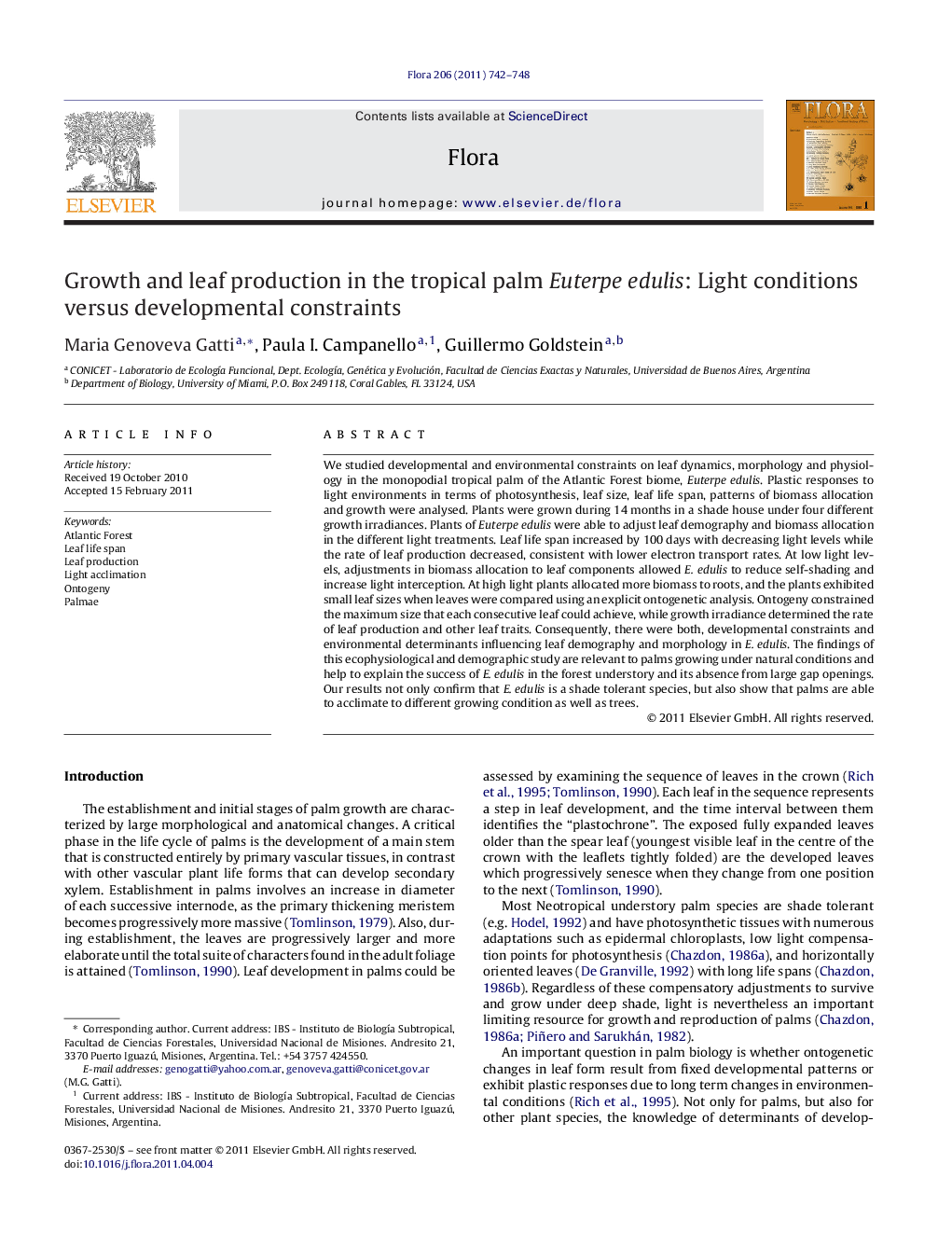| Article ID | Journal | Published Year | Pages | File Type |
|---|---|---|---|---|
| 2179981 | Flora - Morphology, Distribution, Functional Ecology of Plants | 2011 | 7 Pages |
We studied developmental and environmental constraints on leaf dynamics, morphology and physiology in the monopodial tropical palm of the Atlantic Forest biome, Euterpe edulis. Plastic responses to light environments in terms of photosynthesis, leaf size, leaf life span, patterns of biomass allocation and growth were analysed. Plants were grown during 14 months in a shade house under four different growth irradiances. Plants of Euterpe edulis were able to adjust leaf demography and biomass allocation in the different light treatments. Leaf life span increased by 100 days with decreasing light levels while the rate of leaf production decreased, consistent with lower electron transport rates. At low light levels, adjustments in biomass allocation to leaf components allowed E. edulis to reduce self-shading and increase light interception. At high light plants allocated more biomass to roots, and the plants exhibited small leaf sizes when leaves were compared using an explicit ontogenetic analysis. Ontogeny constrained the maximum size that each consecutive leaf could achieve, while growth irradiance determined the rate of leaf production and other leaf traits. Consequently, there were both, developmental constraints and environmental determinants influencing leaf demography and morphology in E. edulis. The findings of this ecophysiological and demographic study are relevant to palms growing under natural conditions and help to explain the success of E. edulis in the forest understory and its absence from large gap openings. Our results not only confirm that E. edulis is a shade tolerant species, but also show that palms are able to acclimate to different growing condition as well as trees.
